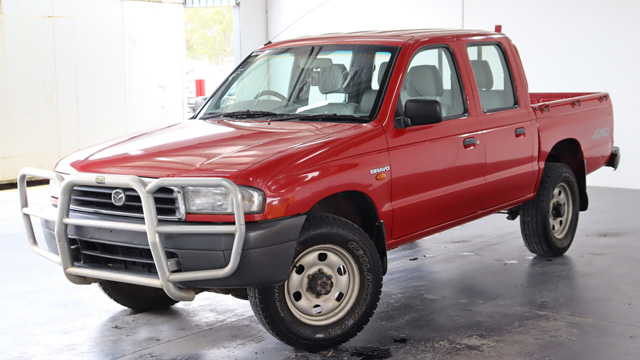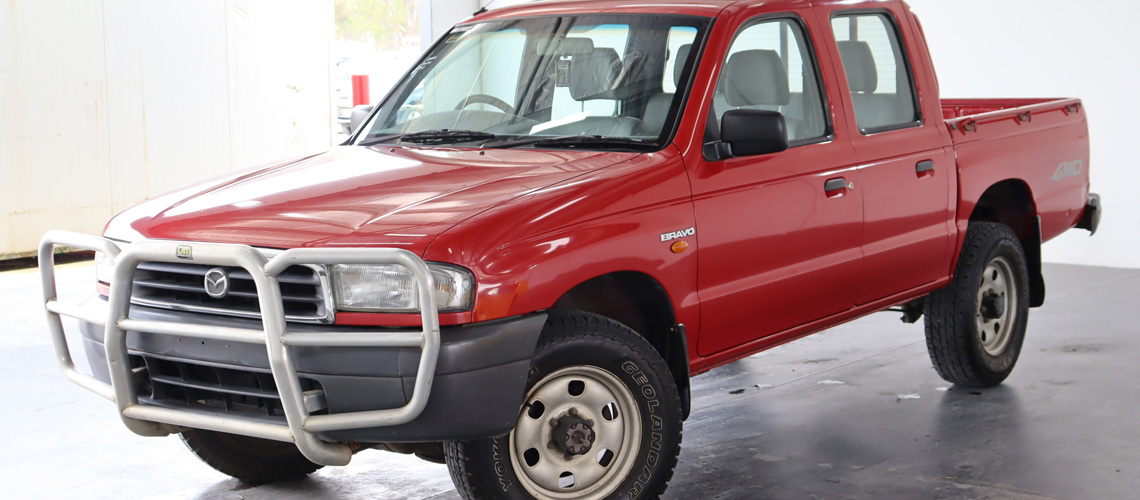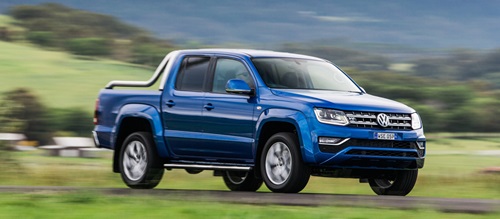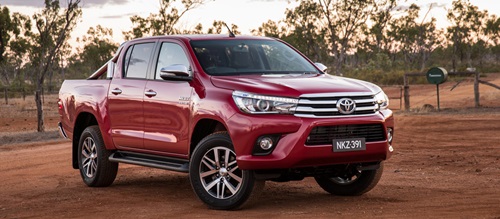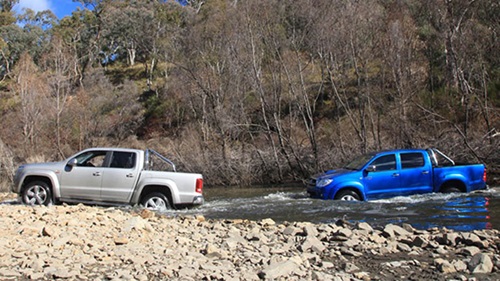Specifications |
|
| Engine | 2.5L |
| Transmission | Manual |
| Fuel Economy |
|
| Output | 86kW/280Nm |
| ANCAP rating |
|
In recent years the light commercial market in Australia has benefited from the addition of many new models. The latest examples from most manufacturers offer major improvements in comfort and ride quality, thereby becoming more car-like to drive. Not to be outdone, Mazda recently launched a new generation of B series utilities which it hopes will help them claim a larger share of the light commercial market.
The new range of Mazda B series light commercial vehicles includes a range of two wheel drive and four wheel drive variants that include single cab, cab plus and dual cab models. The variety of models should satisfy the needs of both tradespeople and recreational users alike.
Mazda's 2.6 litre fuel injected petrol engine has been retained throughout the range and remains largely unaltered form the previous model. The big news; however, is the addition of an all new 2.5 litre turbo charged diesel engine that delivers the most power and torque of any diesel engine in its class.
Ford and Mazda are two manufacturers that have participated in a model sharing arrangement for a number of years. Under this type of scheme, manufacturers share the design and manufacturing costs of a particular model vehicle and each manufacturer markets the vehicle under their own model designation. The results of their continuing alliance are the new model Mazda Bravo and the new Ford Courier range of light commercial vehicles.
One of the more interesting attributes of the new Mazda Bravo range is the fact that it is no longer produced in Mazda's Hiroshima factory in Japan. The new Bravo line-up is the first of the Mazda range to roll off the production line at AutoAlliance (Thailand) Company Limited.
The vehicle made available by Mazda Australia Pty Limited and evaluated for this report was a four-wheel drive dual cab Bravo DX powered by the new 2.5 litre turbo diesel engine. A five-speed manual transmission is standard across the entire Bravo range, with a four-speed automatic transmission available as an option on selected petrol engined two wheel drive variants only.
Features and equipment
There are two specification levels available in the Bravo range of utilities, the DX (base model) and the SDX (better equipped model). While the DX specification is available across the full range of Bravo utilities, the SDX specification is only offered on four wheel drive dual cab variants.
The DX dual cab four wheel drive Bravo has a reasonably good level of standard features and equipment for a commercial vehicle. Some of the standard items include intermittent wipers with mist function, tachometer, digital radio cassette, power steering, cloth seats, lockable glovebox, adjustable steering column, vinyl floor coverings and door trim, front door map pockets, centre console storage for two drinks, cigarette lighter and auxiliary 12 V power outlet, hand throttle, high and low range, manual locking free wheel hubs, central locking and a 'lights on' warning chime.
In addition to the features listed above, the SDX receives a number of extra items. The additional standard equipment and features include alloy wheels, velour seats and door trim, centre console with lid, floor carpets, power windows and electric mirrors.
Coinciding with the launch of the new Bravo, Mazda has released a comprehensive range of factory approved accessories which will allow owners to customise their vehicles in order to better suit their needs. Recreational and commercial drivers are equally catered for in Mazda's extensive accessory list. Some of the accessory items available include airconditioning, security systems, alloy wheels, CD stacker (6 disc), towbars, headlight covers, bonnet guard, fender flares, long range fuel tank, bull bar and a canopy for Dual Cab models.
Pricing for the new Bravo range starts from $19,195 for the two wheel drive single cab chassis DX fitted with the 2.6 litre engine. At the top end of the price range is the four wheel drive dual cab SDX turbo diesel, priced at $37,990. The vehicle evaluated for this report retails for $35,990, indicating that the SDX model carries a $2000 premium over the DX. These prices do not include dealer charges or on road costs.
The new 2.5 litre turbo diesel engine is the principal engine in the Bravo range of utilities. It is a modern engine that utilises Mazda's latest diesel technology to produce the most power of any diesel engine in its class. The engine features a single overhead camshaft design, three valves per cylinder, intercooler, indirect fuel injection and two internal balance shafts to reduce vibration and noise. Mazda has chosen not to use a conventional radial type turbocharger on its new engine. Instead, a new diagonal exhaust gas flow turbocharger is employed which is claimed to improve charging efficiency, reduce turbo lag and improve throttle response at low speeds.
Body and finish
The new generation Bravo range comprises all new body structures and contemporary styling. A stronger passenger cage structure, increased torsional rigidity and a larger body are some of the key improvements introduced by Mazda.
The new Bravo is typically characterised by more rounded or contoured body lines than the superseded model. Subtle wheel arch flares, new headlights, front bumper, bonnet and grille combine to give the latest Bravo a distinctive and stylish new appearance.
An examination of our road test vehicle revealed the panel fit, paint and interior fitout to be of good quality which is at least equal to Mazda's earlier offerings from their Japanese manufacturing plant.
Comfort and space
Mazda's concept for the new Bravo range of light commercial vehicles is 'Work and Play'. In keeping with this theme, all models benefit from more interior cabin space, car-like interior styling and improved passenger comfort.
The cloth trimmed front bucket seats are quite basic in shape, but nevertheless proved to be fairly comfortable. Outward visibility from the driver's seat is good and shorter drivers will benefit from the driver's position having been raised by 25 mm. Front seat head and leg room has also been improved.
Rear seating is a bench seat set-up with enough space to accommodate three persons. Head room, seat width and leg room have all been increased over the previous model. Additional padding has been added to the seat back and the cushion which helps to improve rear seat passenger comfort.
Behind the wheel
From the driver's seat there is a clear view of the instrument panel which is housed in a nicely curved and modern looking dashpad. The instruments themselves are large, easy to read and their layout is functional. A tachometer is a welcome addition to the DX model tested and is now a standard feature of all Bravo models.
Continuing the car like theme, the controls of the Bravo are well positioned, precise and light to operate. Perhaps the only things that highlight the Bravo's commercial heritage is the familiar under dashboard umbrella-type handbrake and the gearlever for the transfer case. Nevertheless, the Bravo tested was an easy and pleasant vehicle to pilot both around the city suburbs and out on the open road.
On the road
In addition to the smart new styling and modern interiors, Mazda has successfully introduced a host of improvements throughout the new Bravo range that are not readily apparent until such time as you have the opportunity to drive one of the new vehicles.
One of the most noticeable areas of progress is the additional performance that is now available from the new turbocharged diesel engined models. Considering that the engine displaces only a medium capacity of 2.5 litres, the power and torque it produces is excellent. Open road cruising really is a breeze with the new diesel engine. The engine is very responsive and charges up hills in top gear where the naturally aspirated four cylinder diesel it replaces would have required one or two downchanges and been unable to maintain a constant speed.
For a four wheel drive one tonne utility the ride quality of the Bravo was found to be good. Often commercial vehicles are firmly sprung and require a partial load to eliminate what would otherwise be a harsh ride. The new Bravo; however, offered a good compromise between load carrier and passenger car.
Mazda claims that reduced cabin noise levels are a feature of the new Bravo, and a drive of a diesel SDX seems to give that impression. However, the DX model tested with its vinyl floor coverings allows significantly more noise into the cabin.
The braking system of the Bravo has also undergone a significant rework and now has thicker, ventilated front disc rotors and larger disc pads. The braking tests undertaken during the evaluation of the vehicle showed excellent resistance to fade when the vehicle was unladen and provided good pedal feel.
Summary
Mazda's latest offerings in the one tonne utility market, the Bravo range, feature major improvements to passenger comfort and overall refinement. While already known as being a solid and dependable work vehicle, the latest model should extend this reputation to include modern and car-like. The contemporary styling and an advanced new turbo diesel engine should increase the appeal of the new Bravo to workers and recreational users alike.







